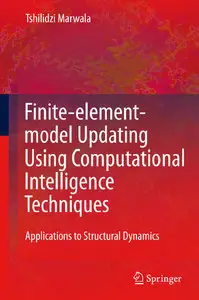Tshilidzi Marwala, "Finite Element Model Updating Using Computational Intelligence Techniques: Applications to Structural Dynamics"
Springer; 1st Edition | English | 2010-06-15 | ISBN: 1849963223 | 263 pages | PDF | 1.58 mb
Springer; 1st Edition | English | 2010-06-15 | ISBN: 1849963223 | 263 pages | PDF | 1.58 mb
FEM updating allows FEMs to be tuned better to reflect measured data. It can be conducted using two different statistical frameworks: the maximum likelihood approach and Bayesian approaches. This book applies both strategies to the field of structural mechanics, using vibration data. Computational intelligence techniques including: multi-layer perceptron neural networks; particle swarm and GA-based optimization methods; simulated annealing; response surface methods; and expectation maximization algorithms, are proposed to facilitate the updating process. Based on these methods, the most appropriate updated FEM is selected, a problem that traditional FEM updating has not addressed. This is found to incorporate engineering judgment into finite elements through the formulations of prior distributions. Case studies, demonstrating the principles test the viability of the approaches, and. by critically analysing the state of the art in FEM updating, this book identifies new research directions.



